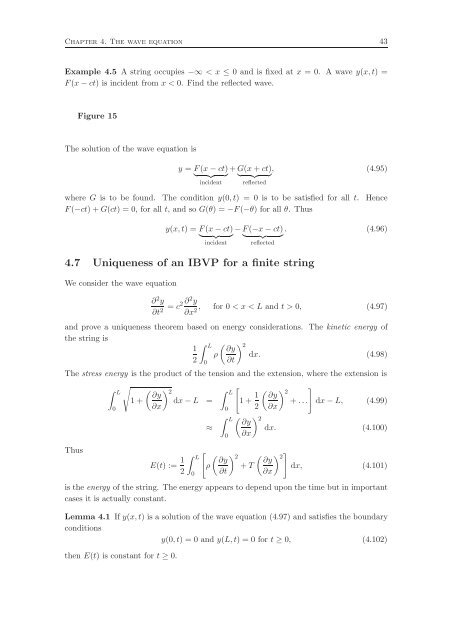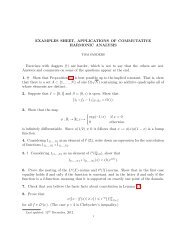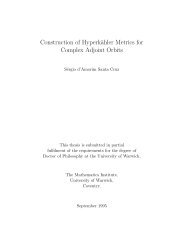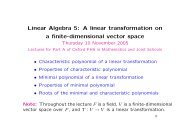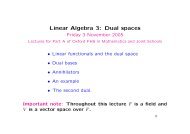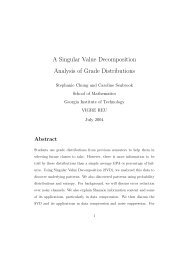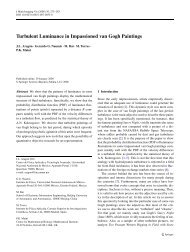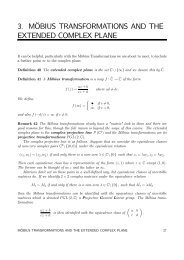Fourier Series and Partial Differential Equations Lecture Notes
Fourier Series and Partial Differential Equations Lecture Notes
Fourier Series and Partial Differential Equations Lecture Notes
Create successful ePaper yourself
Turn your PDF publications into a flip-book with our unique Google optimized e-Paper software.
Chapter 4. The wave equation 43<br />
Example 4.5 A string occupies −∞ < x ≤ 0 <strong>and</strong> is fixed at x = 0. A wave y(x,t) =<br />
F(x−ct) is incident from x < 0. Find the reflected wave.<br />
Figure 15<br />
The solution of the wave equation is<br />
y = F(x−ct) +G(x+ct) ,<br />
<br />
(4.95)<br />
incident reflected<br />
where G is to be found. The condition y(0,t) = 0 is to be satisfied for all t. Hence<br />
F(−ct)+G(ct) = 0, for all t, <strong>and</strong> so G(θ) = −F(−θ) for all θ. Thus<br />
y(x,t) = F(x−ct) −F(−x−ct) .<br />
<br />
(4.96)<br />
incident reflected<br />
4.7 Uniqueness of an IBVP for a finite string<br />
We consider the wave equation<br />
∂2y ∂t2 = c2∂2 y<br />
∂x2, for 0 < x < L <strong>and</strong> t > 0, (4.97)<br />
<strong>and</strong> prove a uniqueness theorem based on energy considerations. The kinetic energy of<br />
the string is<br />
L 2 1 ∂y<br />
ρ dx.<br />
2 ∂t<br />
(4.98)<br />
0<br />
The stress energy is the product of the tension <strong>and</strong> the extension, where the extension is<br />
<br />
L 2 <br />
L ∂y<br />
1+ dx−L = 1+<br />
0 ∂x<br />
0<br />
1<br />
<br />
2<br />
∂y<br />
+... dx−L, (4.99)<br />
2 ∂x<br />
L<br />
2 ∂y<br />
≈ dx. (4.100)<br />
∂x<br />
Thus<br />
0<br />
0<br />
E(t) := 1<br />
<br />
L 2 <br />
2<br />
∂y ∂y<br />
ρ +T dx, (4.101)<br />
2 ∂t ∂x<br />
is the energy of the string. The energy appears to depend upon the time but in important<br />
cases it is actually constant.<br />
Lemma 4.1 If y(x,t) is a solution of the wave equation (4.97) <strong>and</strong> satisfies the boundary<br />
conditions<br />
y(0,t) = 0 <strong>and</strong> y(L,t) = 0 for t ≥ 0, (4.102)<br />
then E(t) is constant for t ≥ 0.


